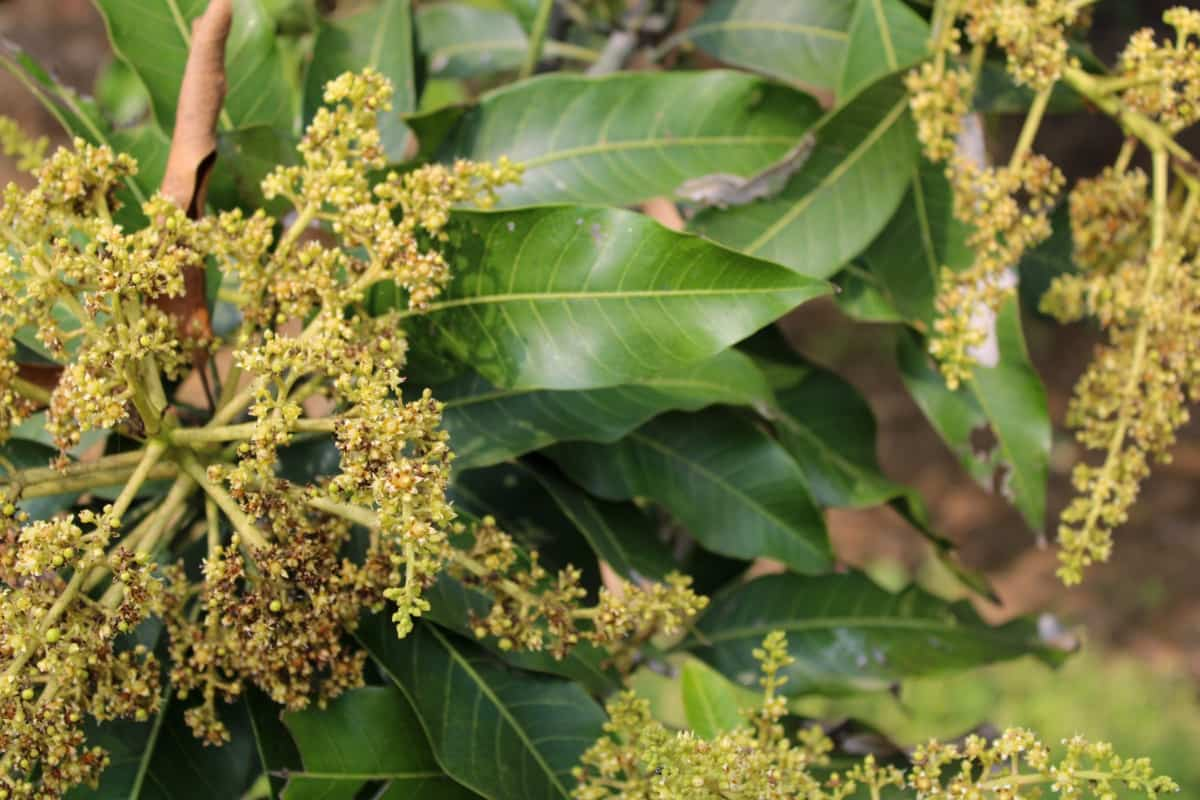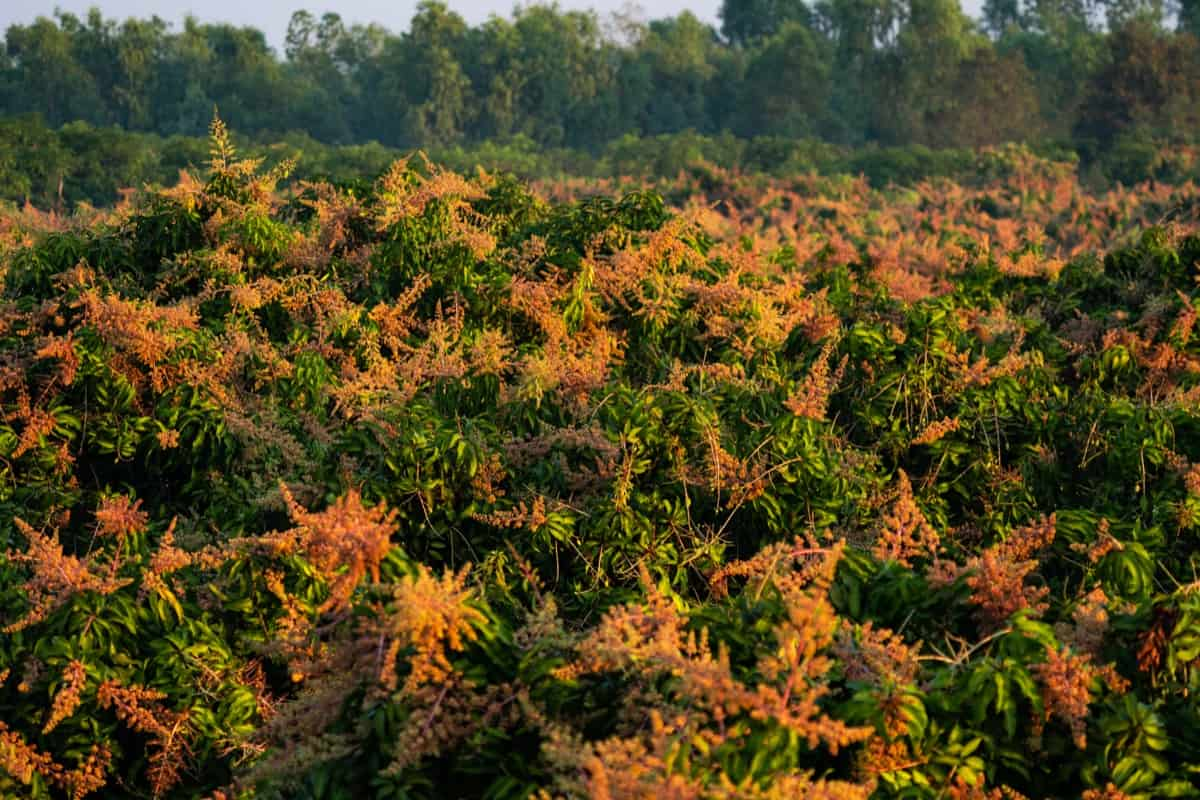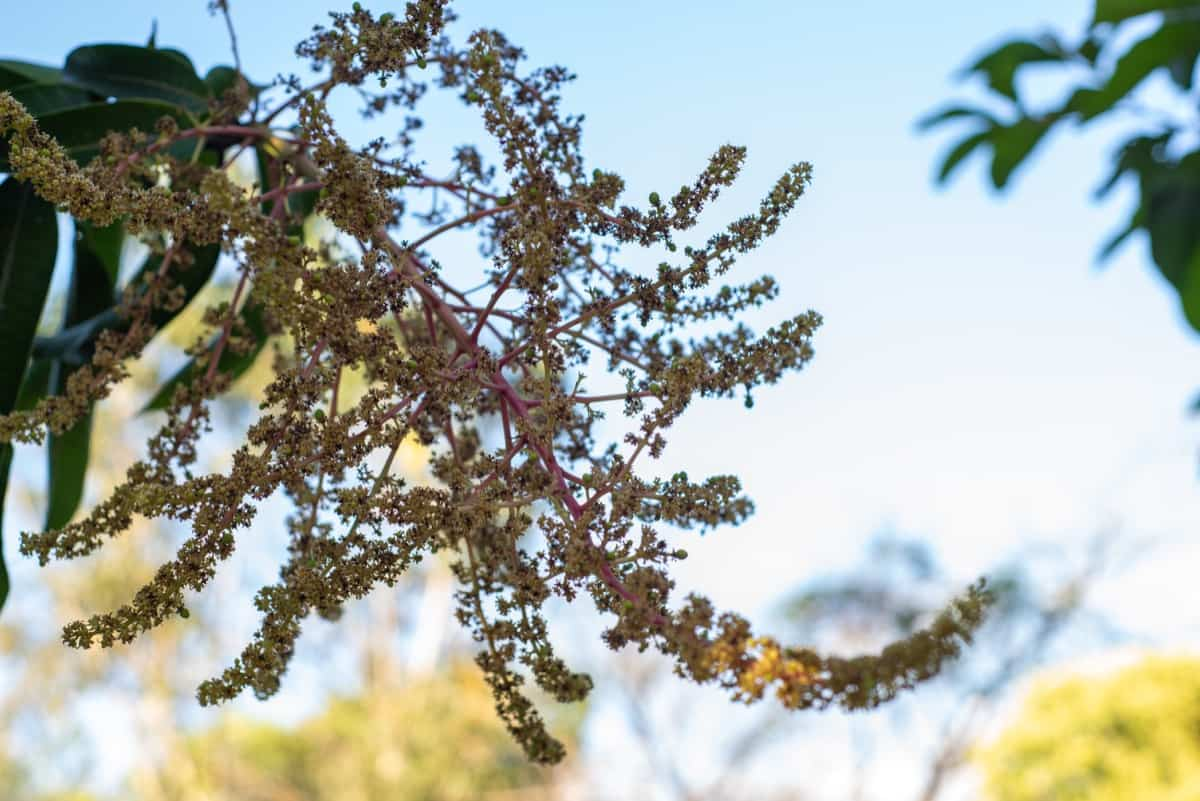Mango trees are known for their beautiful and vibrant flowers, which eventually develop into delicious fruits. Several factors contribute to the browning and dying of Mango flowers, ranging from environmental conditions to pest infestations. Growers and gardeners alike must identify the underlying causes behind this issue to implement appropriate solutions early on.

Why Are My Mango Flowers Turning Brown
Introduction to Mango Flower Browning and Dying: Understanding the Issue
Fungal infections are another common culprit behind brown and dying Mango flowers. Fungi such as anthracnose or powdery mildew can attack the blossoms, causing them to rot or dry up. Pests and insects pose a significant threat as well. Creatures such as aphids or thrips feed on plant tissues, including floral parts, often leaving behind damaged or discolored blooms.
Improper pruning techniques may also impact Mango flower health negatively. Incorrect pruning cuts disturb the natural growth patterns of branches leading up to reduced flowering potential. Overwatering coupled with poor drainage can create excessively moist conditions around roots, promoting root rot, among other issues affecting flower quality.
Environmental Factors Affecting Mango Flowers: Sunburn and Heat Stress
Mango trees are no strangers to the sun’s scorching heat, but sometimes even they can feel overwhelmed. Sunburn and heat stress are environmental factors that can affect Mango flowers, causing them to turn brown and eventually die. When Mango trees are exposed to intense sunlight for prolonged periods, their delicate flowers can become damaged. The high temperatures cause excessive water loss from the flower tissues, leading to dehydration and browning.
Heat stress is another culprit behind brown and dying Mango flowers. As a result, vital nutrients may not be transported efficiently throughout the plant, affecting flower development. Providing shade or using protective coverings during extreme weather conditions is essential to protect your Mango flowers from sunburn and heat stress. Additionally, frequent watering during hot spells helps keep plants hydrated and reduces water loss through transpiration.
Fungal Infections: The Culprit Behind Brown and Dying Mango Flowers
One common fungal infection that affects Mango flowers is anthracnose. This disease often manifests as small, dark spots on the petals, which then spread rapidly and cause them to turn brown and wither away. The fungus responsible for anthracnose thrives in warm and humid conditions, making Mango trees particularly susceptible in tropical climates. Another fungal culprit that can attack Mango flowers is powdery mildew.
In case you missed it: The Ultimate Guide to Growing Mango Tree From Seed at Home

As its name suggests, this infection appears as a white or grayish powder-like substance on the surface of leaves and flowers. Over time, these infected areas may turn brown and die off completely. Remember that prevention is key when managing fungal infections in your garden. Regularly inspecting your plants for signs of infection and promptly treating any affected areas will go a long way in preserving the health of your beloved Mango flowers.
Bacterial Diseases: Contributing to the Decline of Mango Flowers
One such bacterial culprit is Xanthomonas campestris, which causes a condition known as bacterial blossom blight. This disease manifests as small water-soaked lesions on the flower petals, eventually turning them brown and mushy. The bacteria thrive in warm conditions, making Mango orchards particularly susceptible. Another troublesome bacterium is Pseudomonas syringae pv. syringae, which causes bacterial canker in Mango trees.
Infected flowers exhibit darkened areas that soon turn necrotic and die off completely. In severe cases, entire branches may be affected by this devastating disease. Preventing these bacterial diseases involves practicing good orchard hygiene and implementing cultural control measures. Regularly pruning infected branches helps minimize the spreading of bacteria throughout the tree.
Nutritional Deficiencies: Lack of Essential Nutrients in Mango Trees
Nutritional deficiencies can majorly contribute to the browning and dying of Mango flowers. One common nutritional deficiency in Mango trees is a lack of nitrogen. Nitrogen plays a crucial role in promoting leaf growth and flower development. Without enough nitrogen, the tree may not have enough energy to support the production of healthy flowers. Another important nutrient for Mango trees is potassium. Potassium helps with fruit development and overall plant vigor. Phosphorus deficiency can also impact flower health in Mango trees.
Phosphorus aids in root development, ultimately affecting tree nutrient uptake. The tree may struggle to absorb other essential nutrients needed for flower production without sufficient phosphorus. To address nutritional deficiencies in Mango trees, it’s important to conduct soil tests regularly and provide appropriate fertilization based on the results. This will ensure the tree receives a balanced supply of all essential nutrients necessary for optimal flower development.
Pests and Insects: Damaging Effects on Mango Flowers
Pests and insects can wreak havoc on Mango flowers, leading to browning and eventual death. One common pest that affects Mango flowers is the Mango blossom midge. This small fly lays eggs in the flower buds, causing them to wither and die. The larvae feed on the developing flowers, further exacerbating the damage. Another pesky culprit is the aphid. These insects suck sap from the mango leaves, stunting their growth and causing them to turn brown.
Spider mites are yet another nuisance for Mango flowers. These minuscule arachnids pierce through plant cells to feed on sap, leaving yellow stippling patterns on foliage and inflicting stress on the entire tree. To control these pests, it’s important to implement effective pest management strategies like regular monitoring and early detection of infestations. You can significantly minimize insect damage by maintaining a healthy growing environment through proper pruning techniques and regular fertilization.
Improper Pruning Techniques: Impact on Mango Flower Health
Pruning is essential to maintaining Mango trees’ health and productivity. One common mistake is pruning too late in the season. Late pruning can remove potential flower buds, leading to a decrease in fruit production. It’s important to prune during the dormant or early spring before new growth begins.
Another issue is over-pruning or excessive removal of branches. While some pruning is necessary for airflow and light penetration, removing too many branches can result in stress for the tree. Therefore, growers must learn proper techniques or seek professional help to maintain optimal tree vigor and maximize fruit yield.
Overwatering and Poor Drainage: Negative Effects on Mango Flowers
Excess watering also promotes the growth of harmful pathogens such as fungi and bacteria. These microorganisms thrive in moist conditions and can easily infect the delicate petals of Mango flowers. The presence of these diseases further accelerates flower browning and death. Moreover, poor drainage exacerbates these issues by preventing excess water from escaping the root zone.
In case you missed it: Natural and Organic Ways to Treat Mango Tree Leaf Curl: Fix with Effective Home Remedies

When no outlet for excessive moisture accumulates around the roots, causing rotting and decay. As a result, nutrients become inaccessible to the plant’s system, hindering its ability to produce healthy flowers. To prevent overwatering and ensure proper drainage for your Mango trees;
- Avoid frequent or excessive watering.
- Ensure that your planting site has well-draining soil.
- Use raised beds or mounds if growing in heavy clay soils.
Chemical Damage: Harmful Effects of Pesticides and Fertilizers on Mango Flowers
The excessive or improper use of pesticides and fertilizers can lead to browning and dying of the delicate blossoms. Pesticides are designed to eliminate pests that may harm the Mango trees. Unfortunately, they can damage the flowers they are meant to protect if not used correctly.
Some pesticides contain harsh chemicals that can burn or scorch the petals, causing them to turn brown and wither away. To prevent chemical damage from occurring, farmers and gardeners need to follow recommended dosage guidelines when using pesticides and fertilizers. Additionally, opting for organic alternatives whenever possible reduces the risk of harmful effects on Mango flowers.
Genetic Factors: Inherent Traits Leading to Brown and Dying Mango Flowers
Genetic factors are important in determining Mango flowers’ overall health and resilience. One such trait is the plant’s ability to withstand fungal infections. Some Mango varieties are naturally more resistant to fungi, while others may be more susceptible. Variations in nutrient uptake and utilization genes can also affect the flower’s health.
Another genetic factor that may contribute to browning and dying Mango flowers is the tree’s reproductive capacity. Some cultivars may produce weaker or less abundant blooms compared to others due to inherent genetic limitations. Certain varieties may possess natural defenses against common pests that could otherwise damage or destroy blooming structures.
In case you missed it: How to Treat Brown Spots on Mango Tree Leaves Naturally: Causes, Fix With Effective Organic Home Remedies

Environmental conditions, nutrient deficiencies, pests, and other factors must also be considered when diagnosing the problem. Understanding these underlying genetic factors can assist farmers and gardeners in selecting appropriate cultivars for their specific climate conditions and managing potential challenges effectively.
Conclusion
Understanding why your Mango flowers are turning brown and dying is essential for maintaining healthy tree growth and maximizing crop yield. By proactively identifying potential issues early on and implementing suitable remedies promptly, you can help ensure vibrant blossoms that eventually transform into an abundant harvest of delicious Mangos.
- Feed Your Flock for Less: Top 10 Tips to Save on Chicken Feed
- Ultimate Guide to Ossabaw Island Hog: Breeding, Raising, Diet, and Care
- Hatching Answers: The Top 10 Reasons Your Chickens Aren’t Laying Eggs
- Eggs and Economics: Breaking Down the Cost of Raising Backyard Chickens
- Defend Your Greens: Proven Methods to Keep Iguanas Out of Your Garden
- Ultimate Guide to Cinnamon Queen Chicken: A Comprehensive Guide for Beginners
- Ultimate Guide to California Tan Chicken: Breeding, Raising, Diet, Egg-Production and Care
- Ultimate Guide to Marsh Daisy Chicken: Breeding, Raising, Diet, and Care
- 10 Types of Chicken Farming Businesses You Can Start for Profits